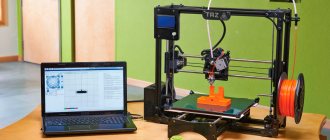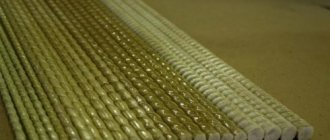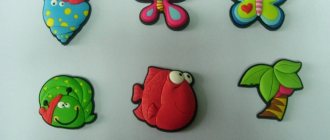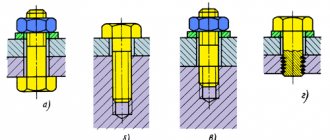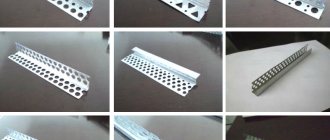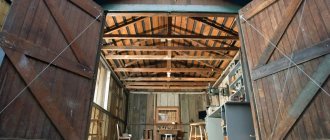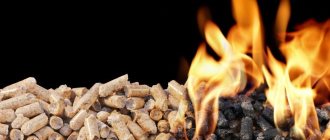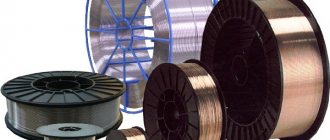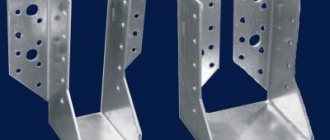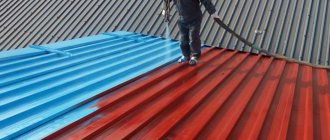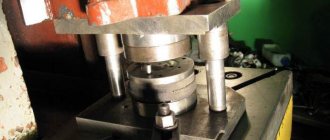Plastic has become a part of people's lives. It is difficult to imagine any modern industrial product that does not contain plastic elements. The business of producing plastic goods is a profitable investment. Fast payback is achieved due to high capacities and a wide range. Business profitability is above 100%.
In addition, the production uses raw materials made from recycled and disused products, so plastic can be used almost endlessly, unlike metal and wood.
Types of plastics and raw materials
workshop for the production of plastic products
The following types of plastics are used in the production of polymer products:
- polyvinyl chloride;
- polyethylene;
- polypropylene;
- high and low pressure polyethylene;
- polystyrene;
- polyethylene terephthalate.
One of the features of the production of plastic products is the selection of raw materials. Even the best equipment must be reconfigured when changing the manufacturer of the source material. Otherwise, the quality of the finished product will change.
Extruder operating principle
In itself, such equipment is an electromechanical device, the main purpose of which is to carry out the process of molding profile parts from plastic or its semi-finished products . The general device of a plastic extruder contains the following components:
- body of the heating system for polymer materials . Conventional resistive or induction systems can act as the main source of thermal energy when carrying out this technological process. When using the latter, the occurrence of high temperatures occurs due to the induction of high-frequency Foucault induction currents onto the body;
- load node Through this element, feedstock enters the housing cavity in various ways;
- working body . It creates the necessary pressure in the equipment, which ensures the movement of raw materials directly from the loading unit to the nozzles, which form finished products from polymer materials. When using an extruder, various physical principles are used, since this device can have different designs - screw, disk, piston. At the moment, screw extruders are most often used;
- extrusion head . In another way, experts call it a spinneret. It is this that ensures the shape of the products that is obtained upon completion of the technological process;
- mechanical drive . In this equipment it is represented by a motor and a gear system. Thanks to it, the creation and transmission of the necessary force to the working body is ensured;
- control and management system . Thanks to it, the required technological regime is maintained.
The starting material is usually granules and powder . They are loaded into the equipment, and then under the action of the working element they move into the working area of the housing. There, under the influence of pressure, friction force and temperature, the feedstock supplied from outside is heated, and in the process of its melting, a state arises that is required by the conditions of the technological process.
During the movement of the feedstock in the cavity of the housing, it is thoroughly mixed to the state of a homogeneous homogenized mass.
Under high pressure conditions, the melt is forced out using forming heads and mesh filters. As a result, final homogenization is ensured and the material is given a given profile.
After this, the material is naturally cooled or a forced method is used, followed by polymerization. The end result is products that have the required configuration and have the specified mechanical and physical properties.
Production technology
All types of plastic products are produced according to a single algorithm:
- creation of a certain chemical composition;
- gas is introduced into the polymer environment (in the manufacture of foams and foam plastics);
- giving the resulting mass the required configuration (casting);
- fixation of the final form.
In the first stage, the various ingredients are mixed until a plastic substance is obtained. Next, a gas phase is introduced into the polymer using one of the methods: mechanical foaming, introduction of rapidly boiling substances that evaporate when heated, or injection of gas directly under pressure. The production method depends on the type of product and the type of polymer.
There are several methods for producing plastic products:
- vacuum forming - the required shapes are obtained from sheets of plastic under various pressures;
- compression molding - the workpiece is compressed inside the mold, excess material is squeezed out through the cracks;
- compression molding - the amount of material required during production is poured into the mold, the halves of the mold are brought together and the product is extruded;
- casting (casting) - the plastic mass is converted into a liquid state and poured into molds corresponding to future products. Most items are produced in this way: dishes, stationery, etc.;
- blowing - the heated mass is fed into a mold, which is sealed and filled with air. The polymer is distributed evenly over the internal surfaces of the mold;
- extrusion - the mass is softened and pressed through a matrix, creating the required shape;
- thermoforming;
- encapsulation;
- layering molding.
Equipment purchase costs
To purchase all the necessary equipment to start production, you will need to spend about 300,000 Russian rubles. However, do not forget that when expanding your enterprise you will need to purchase the necessary equipment. Otherwise, there will be no point in engaging in entrepreneurial activity in this area.
Equipment for the production of plastic products
For the manufacture of products from various types of plastics, ready-made production lines or separate machines are used.
Extruders
conical twin screw extruder
A large group of machines that produce: tubular and sheet films, window profiles, pipes, polymer sheets, plastic slates, foam profiles.
The flat-slot installation includes the following set of elements:
- extruder with filtration system;
- pneumatic loaders;
- blowing head with cooler;
- calibration mechanism;
- pulling device and rotating horizontal rods;
- flat lay module;
- winder
The main device of the machine is an extruder; all additional mechanisms make up the extrusion line. Production operates automatically, controlled by a program.
Injection molding machines
Plastic injection molding machines. The prepared mass is poured into molds and cooled, resulting in a finished piece product. 75% of all plastic products on the planet are produced on such machines. The technology allows you to create products of complex shapes that exactly match the required dimensions, reinforced, hollow, products made from several colors of plastic, hybrid, foam and others. The injection molding machine can work with any type of plastic.
The design of the machine contains:
- material preparation module;
- module for closing and opening forms;
- drive unit;
- automatic control unit.
Plastic injection molding equipment is expensive and contains many innovative solutions. By design, injection molding machines are divided into:
- two- and single-screw, worm-piston and piston;
- with one or more plasticization units;
- with separate or combined plasticization;
- by the number of mold closure nodes: single-position or multi-position;
- electrical, hydromechanical, electromechanical.
Blow molding machines
They are used for the production of hollow containers with thin walls, for example, canisters, barrels, bottles with a capacity of up to 5 thousand liters. The blow molder heats the material and molds it using the blow molding method. Often the blow molding method is combined with injection molding in a single injection-blow molding machine. This is how PET containers are produced.
Extrusion blow molding machines
They combine blowing and extrusion technologies, therefore they can produce a wider range of products than blow molding machines: fuel tanks, bumpers, pallets, seats, buckets, barrels, toys, bottles for ketchup and milk, bottles for cosmetics. All processes are controlled by a microprocessor. The machines are classified:
- by type of heads;
- by the number of posts;
- by the number of streams.
The machine structure includes:
- an extruder in which raw materials are converted into a soft, homogeneous mass;
- The extrusion head is located at the exit of the extruder, and the mass passes through it. The head can be multi- or single-strand, angular or straight-flow. The mass passing through the extrusion head forms a sleeve or pipe blank;
- The blowing part is the main unit of the machine, compressed air is supplied here (through a needle, nipple or mandrel), the mold is supplied and closed, the workpiece is cooled, the mold is opened and the product is removed. The weld seam is also cleaned here.
The extrusion blow molding machine is equipped with a compressor and a cooler.
Thermoforming machines
thermoforming machine
This is equipment for making continuous film products. The thickness and composition of the film may vary. The main products are plastic and paper disposable food containers and glasses.
The operating principle of a thermoforming machine: the material is heated to 140 degrees Celsius, and the product is blown out of the roll. Typically, production uses a film with a thickness of 100 micrometers.
Thermoforming machines can be belt, rotary, turret, multi- or single-station. In addition to molding, products are cut out and sealed on a belt machine. Revolving and rotary are more suitable for molding. The process is controlled automatically, manually or semi-automatically.
Operating principle and design
It should be said that extrusion is far from a new technology. Its history goes back more than six decades. During this time, a large number of machine designs were created, with the help of which its implementation is ensured. The operating principle of this device is based on the essence of the technological process itself.
The extrusion technological process is a complex physical and chemical process, which is affected by mechanical forces under conditions of high temperature and moisture . Heating of processed products occurs due to the fact that the mechanical energy generated during the fight against internal friction, as well as during plastic deformation, is converted into heat.
There are several variable parameters during the extrusion processing process. The most important ones include:
- composition of raw materials;
- humidity;
- its nature.
During the extrusion technological process, changes may occur:
- material temperature;
- pressure;
- intensity and duration of impact on raw materials.
Mini plastic injection machines
This is a type of desktop mini-machine for producing small parts in small batches. Single or multiple forms are used. The weight of the mini-machine is about 15 kg, it can easily be placed on any strong table, which is why it is called a tabletop machine. Some mini models come with a work desk. Mini-models with electric drive and automatic closing module are more compact. These mini-tabletop machines are used to produce experimental parts for new equipment.
Video about vacuum forming machines:
Extruders for polyethylene
All films made from polymer materials are produced by companies exclusively using the extrusion method. To produce such products, a blow molding extruder is used. For equipment used for the production of stretch film, the forming unit may look like a narrow slit. When using such equipment, the output is a single-layer film that has the required thickness and width parameters.
Some models may use round slotted dies of large diameter. When using mini-extruders, it is possible to obtain film with a sleeve width of up to 300 mm and a thickness of 600 microns. Such devices have compact sizes, which makes them possible to install even in a small room.
Advantages of the material
Plastic products are characterized by resistance to a variety of natural precipitation and other influences. They are resistant to corrosion, and are also easy to use, hygienic and highly durable. In addition, modern plastic can retain all these properties for quite a long time. In addition, anyone can repaint a product made from such material in any color without much effort. And with all these advantages, plastic, as a rule, is not very expensive.
